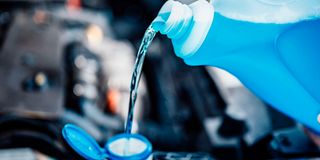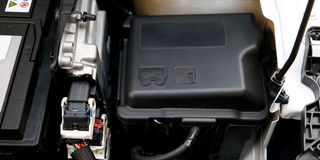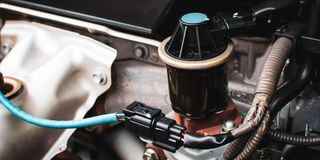Premium
Is it okay to use water instead of coolant?

Some car manufacturers are fussier about coolants than others.
Hello, kindly clarify my concern. My mechanic said sometimes I can use water to cool my car radiator. However, recently another mechanic advised me to use coolant and not water. Kindly clarify whether I am supposed to fill my radiator with water or coolant.
---Lukas Ninterdependent
Plain water is a “coolant” and is all your radiator needs to regulate the temperature of your engine. Water has a high “heat capacity”. But even clean tap water usually contains some minerals which can form deposits in the system over time and reduce its efficiency (ultimately quite severely). Water can also promote rust and offers little “lubrication” to the water pump. These downsides can be reduced by regular flushing and refilling with clean water, and even mechanical scrubbing in extreme cases. Using distilled water reduces the minerals risk, or you can fill and top up your radiator with a branded “coolant”.
This product is also mainly plain (but specially clean) water, with additives that inhibit rust, are less prone to chemical deposit build-up, and give better lubrication to the water pump. Your cooling system will almost certainly give more optimal performance and last longer if you use it fully and regularly. Though of little relevance in our climate, many coolants also contain ethylene or propylene glycol, which cars in colder places need as an “anti-freeze” agent. It prevents water from turning to ice, even at minus 25 degrees C.
As branded coolants are mostly water and can be mixed with water in any ratio, you can top your radiator from the tap if there is no special coolant to hand, and you can pour a bit of coolant into a radiator normally filled with plain water. No problem. But best results will come from using the coolant formula at all times, in the concentration set by the product. Benefits will not increase if the concentration of additives is increased. And whichever strategy you choose, do flush your radiator regularly – as a birthday present at least, or more frequently.
Some car manufacturers are fussier about coolants than others. Check with your owner’s manual. In an emergency, filling your radiator with even dirty river water is better than nothing as long as you flush the system thoroughly.
***

Engine control unit (ECU).
Tricky terminology in computerised engines
Just a polite observation or opinion. To the question from Waithaka D. concerning a Nissan YD25 diesel you opined that the mass airflow sensor is also known as EGR. I feel this is not true since exhaust gas recirculation is a function rather than a sensor. I'm not certain what function the mass airflow sensor (MAF) plays in EGR but I have tended to think the mass airflow sensor is used by the ECU to control the amount of fuel that is injected. Kindly enlighten me if my understanding is incorrect or wanting. Thank you for your useful articles.
Joe WM.
Thank you for your interest. I am a lot more familiar with old-fashioned mechanicals and a toolbox than with modern computerised engine management systems and I welcome correction any time. However, in this instance,around I've been lucky. You are absolutely right that the MAF is one thing (a sensor) and the EGR is another (a function control) but they are inextricably linked and inter-dependent. One provides information; the other acts on that information. Either or both can go wrong. Either or both can be at fault for what appears to be the same problem in performance. My linkage of both MAF and EGR was in that domain. I remain very ready to be corrected...and further enlightened by fundis in this field. To get my own head around this, I try to think of the system in terms of the human body. The Power Control Module (PCM) is the “brain” and it has various “lobes”.

Exhaust gas recirculation (EGR).
Our brains receive information from our senses (sight, hearing, smell, touch), interpret what is going on and decide what needs to be done about it. Engine management computer systems get their information from sensors (like the MAF).
To take action on that information, the PCM sends instructions to “control” units (like the EGR) which then do what is necessary to correct or optimize performance. In human body terms these are like our heart, lungs, kidneys, skin, etc. which regulate what our body needs to do to perform well in different circumstances, like beat faster and breathe deeper to deliver more oxygen to our muscles, or drink when we are thirsty, or sweat to cool us down or shiver to warm us up. The brain, informed by our senses, get our organs to do that.
Basic EGR commands are based on the same sensors that the Power Control Module (PCM) uses for fuel control and ignition timing. In turn, both fuel control and calculated load are based heavily on information from the MAF sensor. Thus faulty information from a sensor could cause faulty operation of EGR controls. So if the EGR makes a mistake, it could be the MAF to blame. I think.
To the best of my understanding, Power Control Module (PCM), Engine Control Unit (ECU), and Engine Control Module (ECM) are often used as interchangeable generic phrases for the same thing – a collective control unit for the engine/transmission system. The finer distinctions are in boffin territory.





